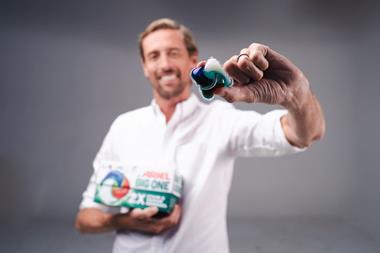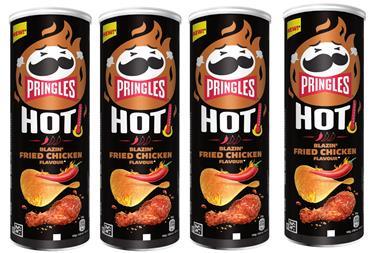In the beginning, functional yogurt drinks were hailed as the elixir of life. Packaged in convenient, single dose bottles, these little marvels virtually flew off shelves with their promises to lower blood pressure, improve digestion and boost the immune system.
But oh, how the mighty have fallen. “Functional yogurt drinks, which were once the gold star in the yogurt and yogurt drinks market, are in decline,” says Chris McDonough, marketing and R&D director of Müller UK.
And while active health yogurt drinks are struggling, it seems that active health yogurts have taken advantage of their liquid cousins’ misfortune. “Yogurts are a more substantial eat they are thicker and people trust that they can help with digestion,” says McDonough. Volume sales of active health benefit yogurts are up a whopping 30.7% in convenience, while sales of yogurt drinks with an active health benefit have dropped 4%, according to IRI (52 weeks ending 13 June 2009).
However, this doesn’t mean that all yogurt drinks are losing favour. Benecol has gained a loyal following by giving a clear message about its products’ cholesterol-lowering properties. Esther Van Onselen, marketing manager at Benecol, explains that when the yogurt drinks category first started, there were a wealth of products launched and those which failed to convey a simple message confused consumers. “Some started to drop out of the category altogether and this has led to a scaling back of yogurt drinks,” she says.
Consumers’ need for more straight forward marketing messages has led to a demand for natural yogurts. “Consumers want purity in their yogurts, demanding additive- and sweetener-free live yogurt and its associated health benefits,” says Total spokeswoman Emma Wilson.
Supporting this theory is consumer research from Ski, which shows a move away from additives, towards uncomplicated, affordable foods with natural ingredients. “We used our research to relaunch the Ski brand as ‘naturally delicious’ - an affordable, tasty yogurt, with only natural ingredients,” says Lactalis-Nestlé UK & Ireland marketing director Michael Inpong. “It drove 12% value & volume brand growth in the pots category versus the same period a year ago.”
Not wanting to miss a trick, Austrian firm Nom made its UK debut in May with the launch of Naturally Good, a multipack, family-friendly yogurt in smooth and layered varieties; and Naturally Creamy, a split pot in both granola and fruit varieties. The company is encouraging consumers to try the granola variant as a breakfast or mid-morning snack.
Dairy manufacturer Emmi also hopes to tap into the breakfast eating occasion with its Swiss Muesli yogurt. UK managing director Julie Plant says: “The Emmi Swiss Müesli Yogurt range caters to the ‘grab and go’ market and offers a convenient, nutritious start to the day.”
Müller is equally keen to open up eating occasions. Its Healthy Balance Corner yogurt was relaunched in June as a more breakfast and snack-orientated product to distinguish it from the rest of the Corner range, which is generally consumed as an after-meal treat. “We’re working with retailers to introduce yogurt into snacking fixtures and exploring the concept of a yogurt-based meal deal,” says McDonough.
A yogurt meal deal could suit consumers on the move, adds Plant. “There are plenty of busy shoppers looking for a quick, healthy snack,” she says. “Link deals work particularly well in this sector.”
To further encourage additional consumption occasions for its potted products, Müller is also looking at smaller, more convenient pack sizes. The company has trialled 100g mini pots of Müller Rice in the multiples and is now engaging with c-stores to see whether the pots can go in the sandwich fixture.
“We’ll decide on whether to go ahead with the small size Müller Rice by the end of the year,” says McDonough.
So while the yogurt guys are trying their utmost to get more people to eat more yogurt, retailers need to play their part by making sure that consumers understand which eating occasion and function each yogurt fulfils. “We need to work on merchandising and clear segmentation of yogurts into everyday, functional and dessert eating occasions,” says McDonough.
The company has spent more than £200,000 on researching displays in c-stores and understanding the convenience consumer. “We’ve been testing different positions for a few of the brands, and experimenting with signage in a number of different stores to improve category navigation and understanding,” says McDonough. “If we can get the display right and capitalise on snacking opportunities, there’s a whole raft of options.”



























No comments yet